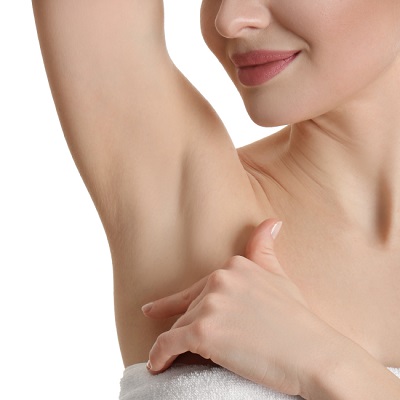Excessive sweating can significantly impact daily life, making individuals feel self-conscious and uncomfortable. For those seeking relief, Hyperhidrosis Treatment in Abu Dhabi offers effective solutions to manage and reduce the symptoms of this condition. With advanced technology and professional care, individuals can regain confidence and comfort in their everyday activities.
Understanding Hyperhidrosis
What Is Hyperhidrosis?
Hyperhidrosis is a medical condition characterized by abnormal and excessive sweating beyond what is necessary to regulate body temperature. It commonly affects areas such as the hands, feet, underarms, and face. This condition can occur independently or alongside other health issues.
Types of Hyperhidrosis
- Primary Hyperhidrosis: Usually localized, affecting specific areas like palms, soles, or underarms. It often begins in childhood or adolescence.
- Secondary Hyperhidrosis: Generally affects larger body areas and is linked to underlying health conditions or medication use.
Causes and Triggers
While the exact cause of primary hyperhidrosis remains unclear, it is believed to involve overactive sweat glands due to nerve signals. Secondary hyperhidrosis can result from hormonal changes, infections, or other medical conditions.
Why Seek Hyperhidrosis Treatment?
Excessive sweating can interfere with personal and professional life, causing embarrassment and discomfort. It may lead to skin infections, social withdrawal, and emotional distress. Therefore, seeking effective treatment can dramatically improve quality of life.
Available Treatment Options in Abu Dhabi
Clinical Procedures for Managing Excessive Sweating
Modern medical facilities in Abu Dhabi offer a range of treatments designed to target hyperhidrosis effectively. These procedures aim to reduce sweat production and control symptoms without invasive surgery in many cases.
Botulinum Toxin Injections
Botulinum toxin, commonly known as Botox, is a popular treatment for hyperhidrosis. It works by blocking the nerves responsible for activating sweat glands. The injections are administered directly into affected areas, providing temporary relief.
- Procedure: Involves multiple small injections into the target area.
- Duration: Results typically last from four to six months.
- Benefits: Non-invasive, quick, and effective in reducing sweating.
Endoscopic Thoracic Sympathectomy (ETS)
This minimally invasive surgical procedure targets nerves that stimulate sweat glands in the underarms, palms, or face.
- Procedure: Performed through small incisions, it interrupts nerve signals responsible for excessive sweating.
- Outcome: Offers a long-term solution for severe cases.
- Considerations: Usually recommended after other treatments have failed.
Iontophoresis
A non-invasive procedure primarily used for palms and soles, iontophoresis involves passing a mild electrical current through water to reduce sweat activity.
Method: The affected area is submerged in water, and a low electrical current is applied.
Frequency: Multiple sessions are often necessary initially, with maintenance treatments afterward.
Advantages: Safe and effective for specific areas.
Prescription Topical Treatments
While not as invasive, certain prescription-strength antiperspirants can be used to control sweating. These are applied directly to the skin and are often the first line of treatment.
Lifestyle and Supportive Strategies
In addition to clinical procedures, lifestyle modifications can help manage symptoms. Wearing breathable clothing, avoiding known triggers such as spicy foods or caffeine, and practicing stress management techniques can complement medical treatments.
The Role of Technology in Hyperhidrosis Management
Advancements in technology have made treatments more effective and less invasive. In Abu Dhabi, clinics employ state-of-the-art equipment to ensure precise targeting of sweat glands and nerve pathways. These technologies contribute to higher success rates and quicker recovery times.
Customized Treatment Plans
Each individual’s experience with hyperhidrosis is unique. Therefore, healthcare providers in Abu Dhabi develop personalized treatment plans based on the severity of symptoms, affected areas, and personal preferences. This tailored approach ensures optimal results and patient satisfaction.
Benefits of Choosing Hyperhidrosis Treatment in Abu Dhabi
- Access to cutting-edge medical technology and skilled professionals.
- A wide range of treatment options to suit individual needs.
- Confidential and supportive healthcare environment.
- Focus on minimally invasive procedures for faster recovery.
Aftercare Tips for Maintaining Results
Following treatment, proper aftercare can help maximize benefits and prevent complications. It is essential to follow healthcare provider instructions, which may include maintaining hygiene, avoiding strenuous activities immediately after procedures, and scheduling follow-up appointments.
Monitoring and Follow-Up
Regular monitoring allows practitioners to assess the effectiveness of treatment and make necessary adjustments. Follow-up visits are crucial to ensure sustained relief and address any concerns.
Lifestyle Adjustments
Adopting lifestyle changes such as wearing loose, breathable clothing and managing stress levels can support ongoing management of hyperhidrosis symptoms.
Frequently Asked Questions (FAQs)
How long do the effects of hyperhidrosis treatments last?
The duration varies depending on the treatment used. For example, Botox injections typically provide relief for four to six months, while surgical options like ETS may offer a permanent solution.
Is hyperhidrosis treatment safe?
Yes, when performed by trained professionals, the procedures are generally safe and effective. It is important to discuss any concerns or medical history with healthcare providers beforehand.
Can hyperhidrosis return after treatment?
In some cases, symptoms may gradually return over time, especially with treatments like Botox. However, repeat treatments can help maintain relief.
Are there any restrictions after treatment?
Post-treatment care may include avoiding strenuous activities, staying hydrated, and following specific hygiene guidelines as advised by the healthcare provider.
Who is an ideal candidate for hyperhidrosis treatment?
Individuals with persistent, bothersome excessive sweating that impacts daily life are suitable candidates. A thorough consultation helps determine the most appropriate treatment plan.
Conclusion
Managing hyperhidrosis effectively requires a comprehensive approach tailored to each individual’s needs. Hyperhidrosis Treatment in Abu Dhabi offers a variety of advanced options that can significantly reduce excessive sweating, improve comfort, and restore confidence. With professional care and modern technology, individuals can look forward to a life free from the limitations and embarrassment caused by this condition.






